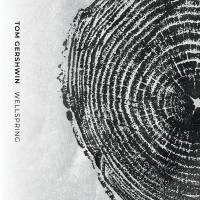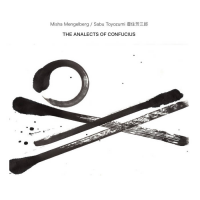Home » Jazz Articles » Album Review » Dave Bryant: The Garden of Equilibria
Dave Bryant: The Garden of Equilibria
Each track on The Garden of Equilibria is really different. The two solo piano pieces tread a fine line between spontaneity and meditative thought; free and not-free. "Solo No. 2," for all its abstraction and odd juxtapositions, is actually quite grooving. A careful listen reveals Bryant's foot tapping along throughout. "Solo No. 1," a variation on a similar set of harmonic, rhythmic and melodic threads, is gentler and almost ballad-like at times. Here, the result is somewhat reminiscent of Bley's solo piano music from the 70s and 80s.
The vast bulk of the album, however, features a seasoned, virtuosic band. On these tracks, Bryant's musical directions encompass Ornette-inspired melodies, thorny post-Bitches' Brew electric jazz, and crafty, contrapuntal free-bop. There are two very long tracks and three shorter pieces. The first of the two lengthy pieces, "Four Ways In" is actually a four-part suite. A stark, all-acoustic opening passage quickly gives way to a high-energy romp in 6/8. Bryant's busy comping (on what sounds like a Wurlitzer electric piano) and the ever-shifting dual percussing of Curt Newton and Eric Rosenthal provide a contrasting backdrop to an out-of-tempo, melismatic dual saxophone melody. The rhythm shifts to 4/4 and breaks down entirely for an extended rubato collective improvisation which, itself, breaks for a blazing keyboard solo as the 6/8 motif returns. The title track, which clocks in at just under 20 minutes, is a conversational free-ish piece featuring cellist Jeff Song, both percussionists and bassist Jacob William. Here, Bryant solos primarily on the acoustic piano, using the electronic keys to make brief thematic statements. Pretty thorny stuff!
Song stays on, and the saxophonists return for "Check Your Lid," a joyous piece that mates a singing Keith Jarrett-like country-Gospel melody to wonderfully restless dual free-bop drumming. "Salutations" is less frenetic, with Bryant's Rhodes piano bubbling freely over grooving dual drums and bass as Song's cello groans and mutters in the background. "Secret Handshake" is a real surprise. Back on the acoustic, accompanied only by William's vigorous walking bass, Bryant's improvisation here nods to stride and bebop in addition to more recent styles.
An individualistic pianist and composer, Bryant's readily-palpable harmolodic influences are balanced and leavened by a host of other strands from the jazz continuum. The Garden of Equilibria is a fascinating and inspiring album, especially if you're a fan of edgy, hard-hitting electronic jazz that is not afraid to get way out there.
Track Listing
Four Ways In; Solo No. 2; The Garden of Equilibria; Check Your Lid; Solo No. 1; Salutations; Secret Handshake.
Personnel
Dave Bryant
keyboardsDave Bryant: piano, electronic keyboards; Tom Hall: tenor saxophone; Neil Leonard: soprano and alto saxophones; Curt Newton: drums and percussion; Eric Rosenthal: drums and percussion; Jeff Song: cello; Jacob William: bass.
Album information
Title: The Garden of Equilibria | Year Released: 2016 | Record Label: Self Produced
Tags
PREVIOUS / NEXT
Support All About Jazz
 All About Jazz has been a pillar of jazz since 1995, championing it as an art form and, more importantly, supporting the musicians who make it. Our enduring commitment has made "AAJ" one of the most culturally important websites of its kind, read by hundreds of thousands of fans, musicians and industry figures every month.
All About Jazz has been a pillar of jazz since 1995, championing it as an art form and, more importantly, supporting the musicians who make it. Our enduring commitment has made "AAJ" one of the most culturally important websites of its kind, read by hundreds of thousands of fans, musicians and industry figures every month.




















